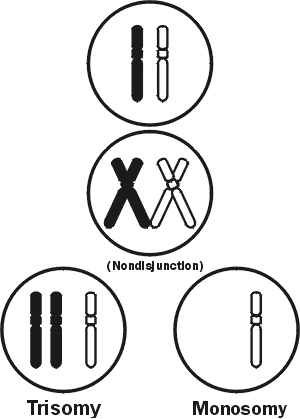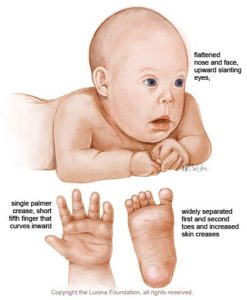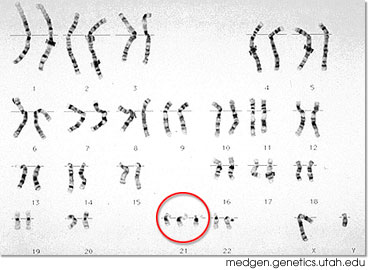

autosome: any chromosome of a type that is the same in males and females of the species.

crossing over: at prophase I of meiosis, an interaction in which non-sister chromatids break at corresponding sites and exchange segments resulting a genetic recombination.
deletion: at cytological level, loss of a segment from a chromosome. At molecular level, loss of one to a few base pairs from a DNA molecule.

disease: outcome of infection when defenses aren't mobilized fast enough and a pathogen's activities interfere with normal body functions.

double-blind study: different investigators independently collect, then compare data.
duplication: gene sequence repeated several to many hundreds or thousands of times.

genetic abnormality: a rare or less common version of a heritable trait.


genetic disorder: any inherited condition that causes mild to severe medical problems.

genetic recombination: result of any process that puts new genetic information into a DNA molecule (e.g., by crossing over).
homologous chromosome: one of a pair of chromosomes identical in size, shape, and gene sequence, and that interact at meiosis.
in-vitro fertilization: conception outside the body (''in glass'' petri dishes or test tubes).

independent assortment: Mendelian theory that by the end of meiosis, each pair of homologous chromosomes are sorted before shipment to gametes independently of how the other pairs were sorted.

inversion: part of a chromosome that became oriented in reverse, with no molecular loss.

karyotype: preparation of metaphase chromosomes sorted by length, centromere location, other defining features.

linkage group: all genes on a chromosome.

mosaicism: cells of same type express genes differently, so phenotypic differences emerge in same type of tissue.
Non-disjunction: failure of sister chromatids or a pair of homologous chromosomes to separate during meiosis or mitosis. Daughter cells end up with too many or too few chromosomes.

polyploidy: having three or more of each type of chromosome in the nucleus of a eukaryotic cell at interphase.

reciprocal cross: a paired cross. In the first cross, one parent displays the trait of interest. In the second, the other parent displays it.
sex chromosome: a chromosome with genes that affect sexual traits. Depending on the species, somatic cells have one or two sex chromosomes of the same or different type (in mammals, XX females, XY males).

syndrome: a set of symptoms that may not individually be a telling clue but collectively characterize a genetic disorder or disease.
translocation: of cells, movement of a stretch of DNA to a new chromosomal location with no molecular loss.

 X chromosome: a type of sex chromosome. An XX mammalian embryo becomes female; an XY pairing causes it to develop into a male.
X chromosome: a type of sex chromosome. An XX mammalian embryo becomes female; an XY pairing causes it to develop into a male. Y chromosome: a type of sex chromosome. An XX mammalian embryo becomes female; an XY pairing causes it to develop into a male.


















